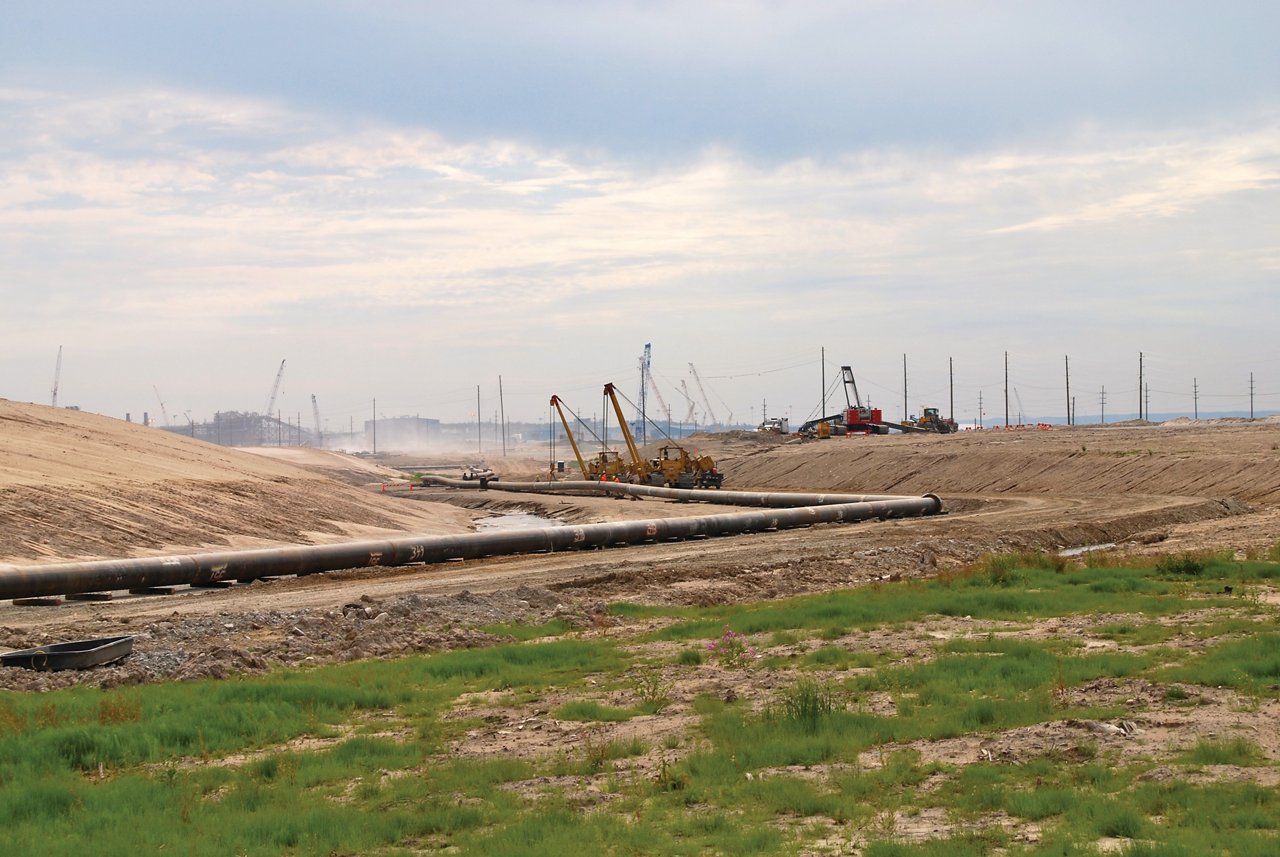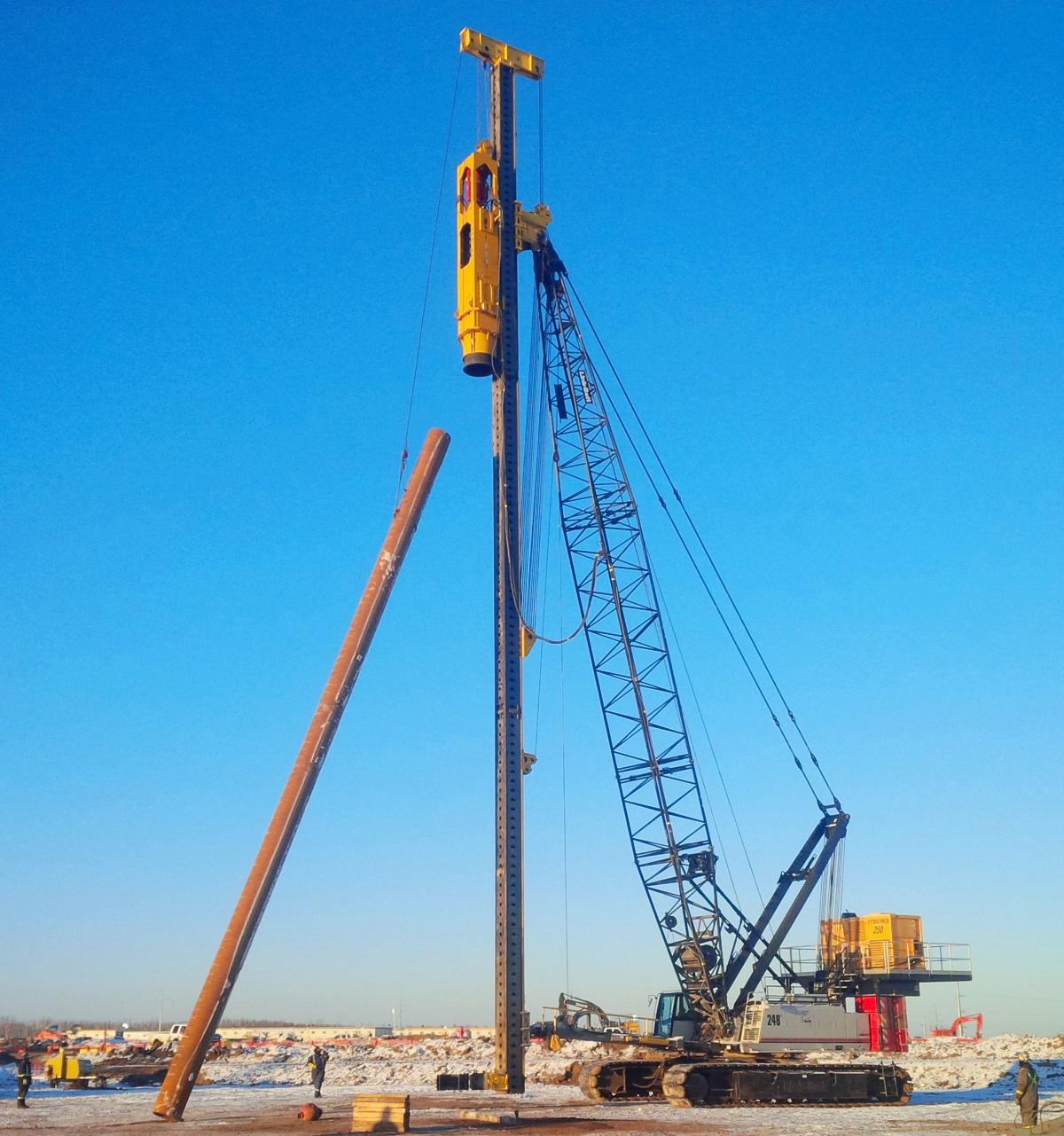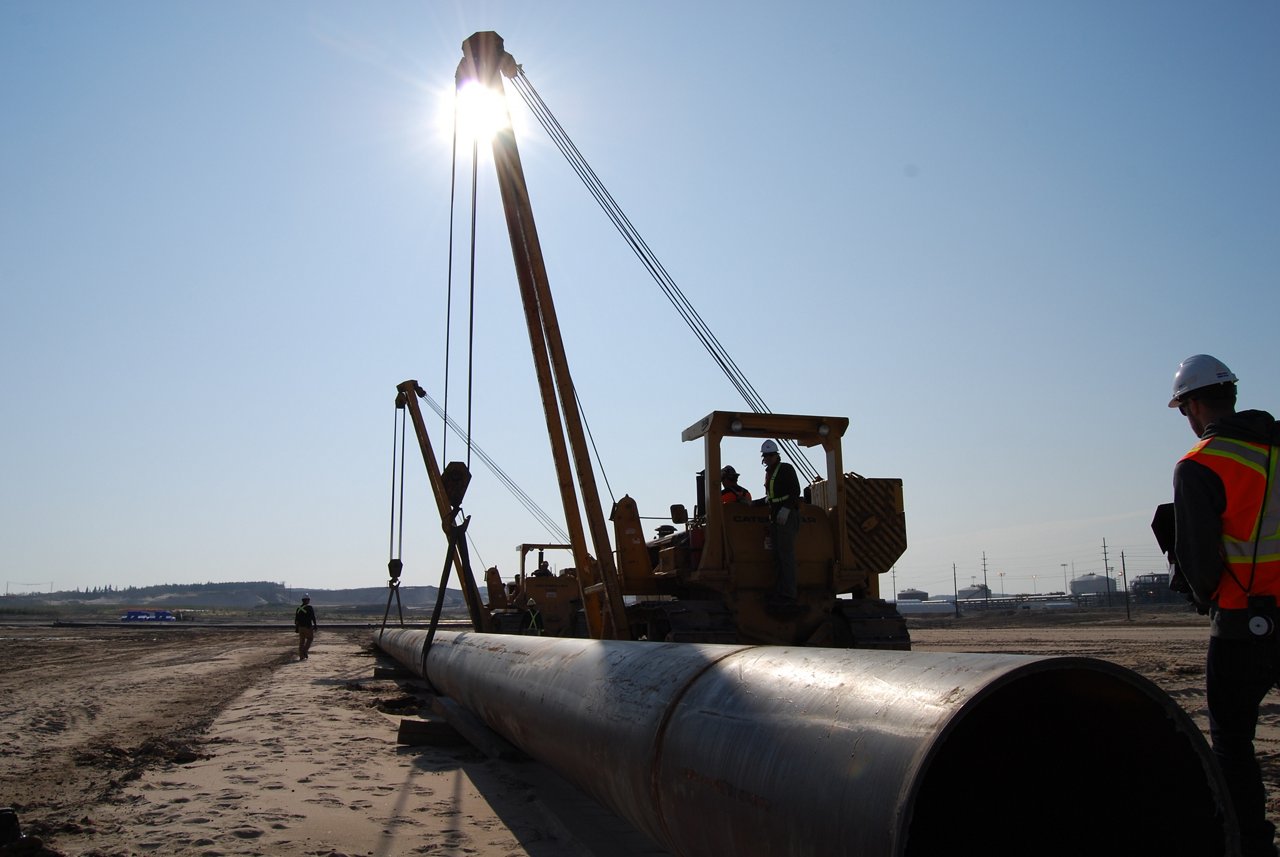Jointly owned by Imperial Oil and ExxonMobil Canada, the Kearl Oil Sands Project is one of Canada’s largest open-pit mining operations, with regulatory approval for up to 345,000 barrels per day (bpd) of bitumen production.
Kearl Initial Development - Utilidor, Hydrotransport, and Tailings
Ledcor’s construction began in 2011 and included the four km above-ground insulated modularized Utilidor to carry utility lines from the main plant site to the Ore Preparation Plant (OPP). In support of this field insulation, Ledcor fabricated and assembled 312 utilidor modules.
The foundations portion of the construction work scope included more than 2,000 linear meter (lm) of sheet piles for an emergency dump pond on the tailings distribution system.
Kearl Tailings Distribution Extension Project - Tailings and Glandwater Pipelines
The Tailings Distribution Extension Project includes constructing 7 km (4.3 mi) of above-ground 30 inches carbon steel pipelines, carrying long pour and intermediate pour tailings from the Kearl Plant Site to multiple destination points around the External Tailings Area (ETA). Additionally, Ledcor fabricated 12 pumphouse and electrical modules at our Module Assembly and Pipe Fabrication Facility.
Kearl Expansion Project - Hydrotransport, Buried Corridor Pipeline / Ore Prep Plant
he KEP Hydrotransport Pipelines are two 24-inch, 3.5 km (2.2 mi), above-ground carbon steel pipelines, carrying Hydrotransport slurry from the OPP to the Kearl Plant Site Extraction unit through the Hydrotransport Corridor.
The Utilidor (Buried Corridor Pipeline) consists of a 2.1 km (1.3 mi), mainly below ground, 30-inch carbon steel pipe as well as a six-inch carbon steel diesel line and six-inch FRP Gland water line. The corridor runs from OPP to the Utilities area in the main plant site. Additionally, Ledcor fabricated 30 modules at our Module Assembly and Pipe Fabrication Facility.
Overall, Ledcor’s scope of work for the Kearl Oil sands Project included:
- Heavy earthworks
- Piling (driven and screw piles)
- Structural steel
- Mechanical equipment setting
- Concrete foundations
- Electrical & instrumentation
- Fiber optic
Project Highlights
The Kearl Oil Sands Project reported zero Health, Safety & Environmental recordable incidents during 2012, resulting in a Total Recordable Incident Frequency of zero for the year while expanding over 1,500,000 hours.


